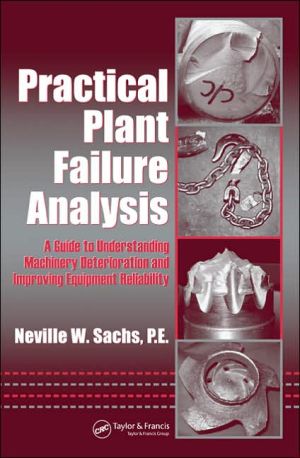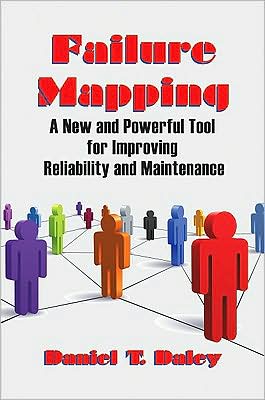Preventing Thermal Cycling And Vibration Failures In Electronic Equipment
This book deals with the packaging of electronic equipment to prevent damage from vibration and exposure to large variations in temperature.
Search in google:
Steinberg, a consultant, states that his text's purpose is to show manufacturers how to design, analyze, and evaluate electronic systems for lower costs and improved reliability in harsh environments, using hand calculations without the aid of a computer. It focuses on how electronic components are affected during use by temperature variations and vibration, how to prevent such problems, and how the concept of damage accumulation can be used to determine the approximate fatigue life of electronic components and assemblies. Annotation c. Book News, Inc., Portland, OR (booknews.com)
PREFACE\ The information presented in this book was originally developed to help improve the reliability of automotive, aircraft, missile, communication, and entertainment electronic equipment used by commercial, industrial, and military electronics industries. These groups want to achieve a dramatic improvement in the readiness and reliability of their electronic equipment, while holding down the acquisition and support costs. One way to accomplish these goals is to implement an automotive and avionics integrity program, or AVIP. The requirements for such a program have been outlined in document MIL-A-87244, to ensure the electronics will achieve the desired reliable performance over the life of the equipment. This document outlines several critical areas and recommends detailed analysis and investigation to promote a better understanding of the various failure mechanisms resulting from high temperatures, thermal cycling, vibration, shock, and humidity. The areas of investigation include the electronic components, solder joints, circuit boards, interconnects, and assemblies.\ An examination of many electronic failures has shown that most of them appear to be mechanical in nature. They typically involve cracks in the solder joints, lead wires, components, circuit boards, hermetic seals, cemented joints, connectors, and cables. These failures are often caused by various combinations of thermal, vibration, shock, humidity, salt, and dust environments combined, with poor manufacturing processes, poor design practices, and poor maintenance. These areas often contribute to radio frequency interference (RFI) and electrical magnetic interference (EMI)problems.\ The methods shown in this book have been used successfully on a wide variety of large and small electronic systems, operating in many different combinations of severe environments for the past 30 years. Many opportunities were available to evaluate and test sophisticated electronic systems until they failed in various environments. In many of these programs, the reliability was extremely important since the lives of many people were involved. A large number of prototype models were fabricated, instrumented, and tested to destruction as well as later production models, to ensure the reliability of the design and the manufacturing methods. As the equipment costs began to increase rapidly due to the increased complexity, the electronic manufacturing groups began to look for ways to reduce these costs without reducing the reliability.\ Today industry leaders have sharply reduced the costs of their electronic equipment, while they have increased the reliability at the same time. This has been accomplished through the use of powerful high-speed computers and new software programs. These new computers can perform tasks and solve complex problems in a matter of minutes that were previously impossible or would take too much time and money to investigate.\ Computers have been so successful that some upper management people now believe that virtually all the answers to technical problems can be found in these computers. The belief by some is that there is no longer any need to build and test prototype models on new designs to obtain critical reliability data for operation in harsh environments. They think that a lot of money can be saved by eliminating the model building and testing of new products. The new Boeing 777 airplane is used as an outstanding example. This airplane was completely designed on computers, without the normal fabricating and testing of prototype models.\ Many management people are not aware of the huge database Boeing has developed through its own experience with many similar aircraft, and the millions of dollars it spent to purchase the databases from other aircraft manufacturers. This information is available through its computer network to all of its design and test engineers, so the risks involved with a new, but similar, type of aircraft are sharply reduced.\ When unusual new designs are being proposed, or when very severe environments are expected, or when unusual combinations of severe conditions are expected, then it is a poor policy to go into any large-scale production on a product that has not been tested in some way to verify the reliability of the product. This also applies to the use of new materials or processes or when signi®cant weight reductions are demanded. Some type of test should be used to ensure the integrity of the product.\ The purpose of this book is to show how to design, analyze, and evaluate electronic systems for lower costs and improved reliability in harsh environments, using hand calculations, without the aid of a computer. The methods shown have all been proven with extensive testing programs on prototype models and by qualification tests on production hardware. A good computer solution for a large complex system will always be better than a quick hand calculation. People who use computers know the expression GIGO, garbage-in garbage-out. It is very easy to make an error when you are tired, and several hundred data points must be entered into a computer program. One bad data entry can ruin a month or more of hard work when a computer model is being generated. Many computer users often look for a quick and simple way to determine if they have made a major error in their work. The quick methods shown in this book are often used for that purpose. Computer users call these quick methods a sanity check.\ Field failure experience and testing experience has shown that every time a structure is subjected to a stress reversal, part of its life is used up. These stress reversals, or stress cycles, are typically caused by thermal cycling, vibration, and shock conditions found in everyday living. Every time the power is turned on in an electronic system such as a computer, radio, television set, cellular phone, automobile, or airplane, the temperature goes up. When the power is turned off the temperature goes down. This generates a thermal cycle stress. Every time a computer, radio, or television set is shipped from the manufacturer to the consumer, or every time an airplane or an automobile is used for transportation, vibration is experienced. This generates many vibration stress cycles. Every stress cycle will use up part of the fatigue life in the load-carrying structural elements of the system. When the total number of stress cycles reaches a critical level in the weakest element of the system, failures will occur.\ This book concentrates on three important areas of investigation and analysis to ensure cost-effective and reliable electronic systems. These areas of investigation are as follows:\ \ 1. To understand how variations in the thermal coefficients of expansion (TCE) can effect the magnitude of the displacements, forces, and stresses that are developed in electronic assemblies during thermal cycling environments, and how these factors can affect the fatigue life of various structural elements\ \ 2. To understand how resonant conditions can effect dynamic displacements, forces, stresses, and fatigue life in electronic assemblies during different vibration and shock environments\ \ 3. To understand the concept of damage accumulation, and how it can be used to determine the approximate fatigue life of various electronic components and assemblies due to different combinations of fatigue accumulated in thermal cycling and vibration environments.
PrefaceSymbolsCh. 1Physics of Failure in Electronic Systems1Ch. 2Thermal Expansion Displacements, Forces, and Stresses16Ch. 3Vibration of Beams and Other Simple Structures28Ch. 4Vibration of Printed Circuit Boards and Flat Plates41Ch. 5Estimating Fatigue Life in Thermal Cycling and Vibration Environments57Ch. 6Octave Rule, Snubbers, Dampers, and Isolation for Preventing Vibration Damage in Electronic Systems73Ch. 7Displacements, Forces, and Stresses in Axial Leaded Component Wires Due to Thermal Expansions94Ch. 8Designing Electronic Equipment for Sinusoidal Vibration109Ch. 9Assessment of Random Vibration on Electronic Design134Ch. 10Combining Fatigue Damage for Random Vibration and Thermal Cycling157Ch. 11Thermal Cycling Failures in Surface-Mounted Components174Ch. 12Stresses and Fatigue Life in Component Lead Wires and Solder Joints Due to Dynamic Forces and PCB Displacements189Ch. 13Fatigue Life of Long Components, Tall Components, and Small Components Mounted on PCBs213Ch. 14Wear and Interface Surface Fretting Corrosion in Electrical Connectors238Ch. 15Case Histories of Failures and Failure Analyses253Bibliography270Index273
\ From the Publisher"...text s purpose is to show manufacturers how to design, analyze, and evaluate electronic systems for lower cost and improved reliability in harsh environments..." (SciTech Book News, Vol. 25, No. 4, December 2001)\ \ \







